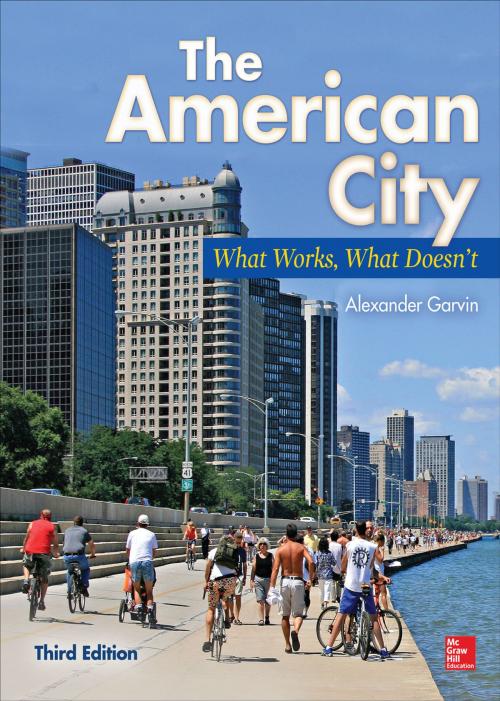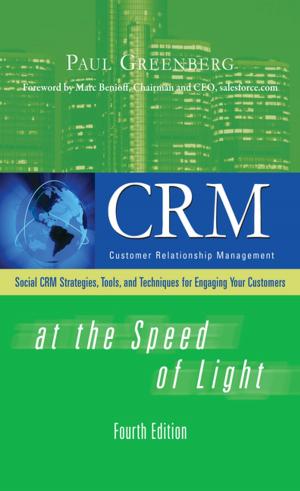The American City: What Works, What Doesn't
Nonfiction, Art & Architecture, Architecture, Landscape, Science & Nature, Technology, Manufacturing| Author: | Alexander Garvin | ISBN: | 9780071801638 |
| Publisher: | McGraw-Hill Education | Publication: | December 2, 2013 |
| Imprint: | McGraw-Hill Education | Language: | English |
| Author: | Alexander Garvin |
| ISBN: | 9780071801638 |
| Publisher: | McGraw-Hill Education |
| Publication: | December 2, 2013 |
| Imprint: | McGraw-Hill Education |
| Language: | English |
The definitive guide to urban planning and design--completely updated and now in full color
In the Third Edition of The American City: What Works, What Doesn't, award-winning city planner and renowned urban scholar Alexander Garvin examines more than 350 programs and projects that have been implemented nationwide in 150 cities and suburbs, evaluates their successes and failures, and offers relevant lessons learned from them.
Nearly all of the book's 650 illustrations are now in full color and consist almost entirely of photographs, maps, and diagrams produced especially for the Third Edition. Garvin discusses major urban initiatives that have emerged over the past two decades, such as Chicago's Millennium Park, Houston's Uptown Business District, and Metropolitan Denver's FasTracks multicounty rapid transit network. He reexamines the wide range of places and strategies covered in the previous edition, offering new analyses and insights. A new chapter on retrofitting the city for a modern commercial economy is included.
This practical guide presents six key ingredients of project success--market, location, design, financing, time, and entrepreneurship--and explains how to combine these elements in a mutually reinforcing manner. Garvin demonstrates how the synthesis of individual and private-sector efforts, community-level action, and broad-based government policy can--and has--achieved urban and suburban regeneration.
COVERAGE INCLUDES:
- A realistic approach to city and suburban planning
- Ingredients of success--market, location, design, financing, time, and entrepreneurship
- Parks, playgrounds, and open space
- Retail shopping
- Palaces for the people--libraries, stadiums, museums, and other public facilities
- Retrofitting the city for a modern commercial economy
- The life and death of the City of Tomorrow--implications of national urban redevelopment programs
- Downtown management
- Increasing the housing supply
- Reducing housing costs
- Housing rehabilitation
- Clearing the slums
- Revitalizing neighborhoods
- Residential suburbs
- New-towns-in-town
- New-towns-in-the-country
- Land use regulation
- Historic preservation
- Comprehensive planning
The definitive guide to urban planning and design--completely updated and now in full color
In the Third Edition of The American City: What Works, What Doesn't, award-winning city planner and renowned urban scholar Alexander Garvin examines more than 350 programs and projects that have been implemented nationwide in 150 cities and suburbs, evaluates their successes and failures, and offers relevant lessons learned from them.
Nearly all of the book's 650 illustrations are now in full color and consist almost entirely of photographs, maps, and diagrams produced especially for the Third Edition. Garvin discusses major urban initiatives that have emerged over the past two decades, such as Chicago's Millennium Park, Houston's Uptown Business District, and Metropolitan Denver's FasTracks multicounty rapid transit network. He reexamines the wide range of places and strategies covered in the previous edition, offering new analyses and insights. A new chapter on retrofitting the city for a modern commercial economy is included.
This practical guide presents six key ingredients of project success--market, location, design, financing, time, and entrepreneurship--and explains how to combine these elements in a mutually reinforcing manner. Garvin demonstrates how the synthesis of individual and private-sector efforts, community-level action, and broad-based government policy can--and has--achieved urban and suburban regeneration.
COVERAGE INCLUDES:
- A realistic approach to city and suburban planning
- Ingredients of success--market, location, design, financing, time, and entrepreneurship
- Parks, playgrounds, and open space
- Retail shopping
- Palaces for the people--libraries, stadiums, museums, and other public facilities
- Retrofitting the city for a modern commercial economy
- The life and death of the City of Tomorrow--implications of national urban redevelopment programs
- Downtown management
- Increasing the housing supply
- Reducing housing costs
- Housing rehabilitation
- Clearing the slums
- Revitalizing neighborhoods
- Residential suburbs
- New-towns-in-town
- New-towns-in-the-country
- Land use regulation
- Historic preservation
- Comprehensive planning















